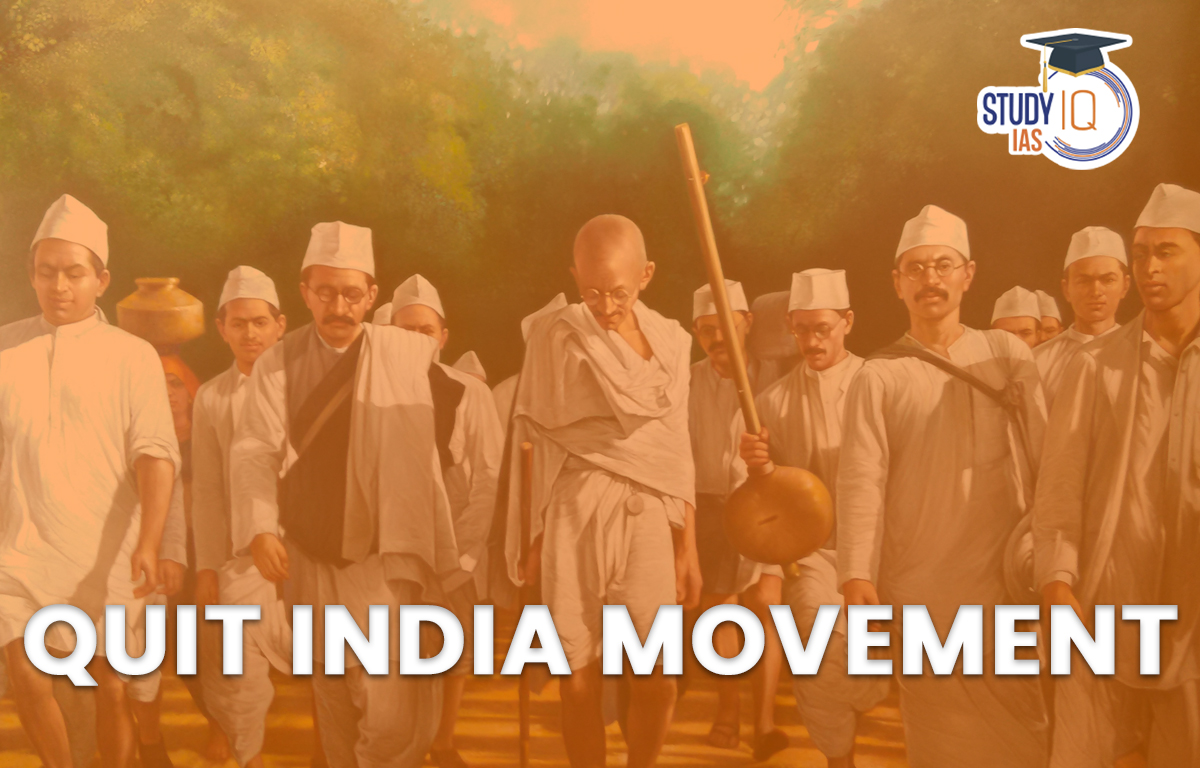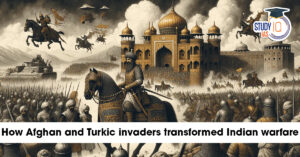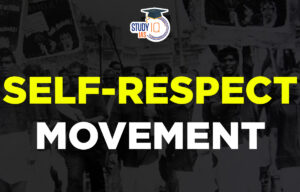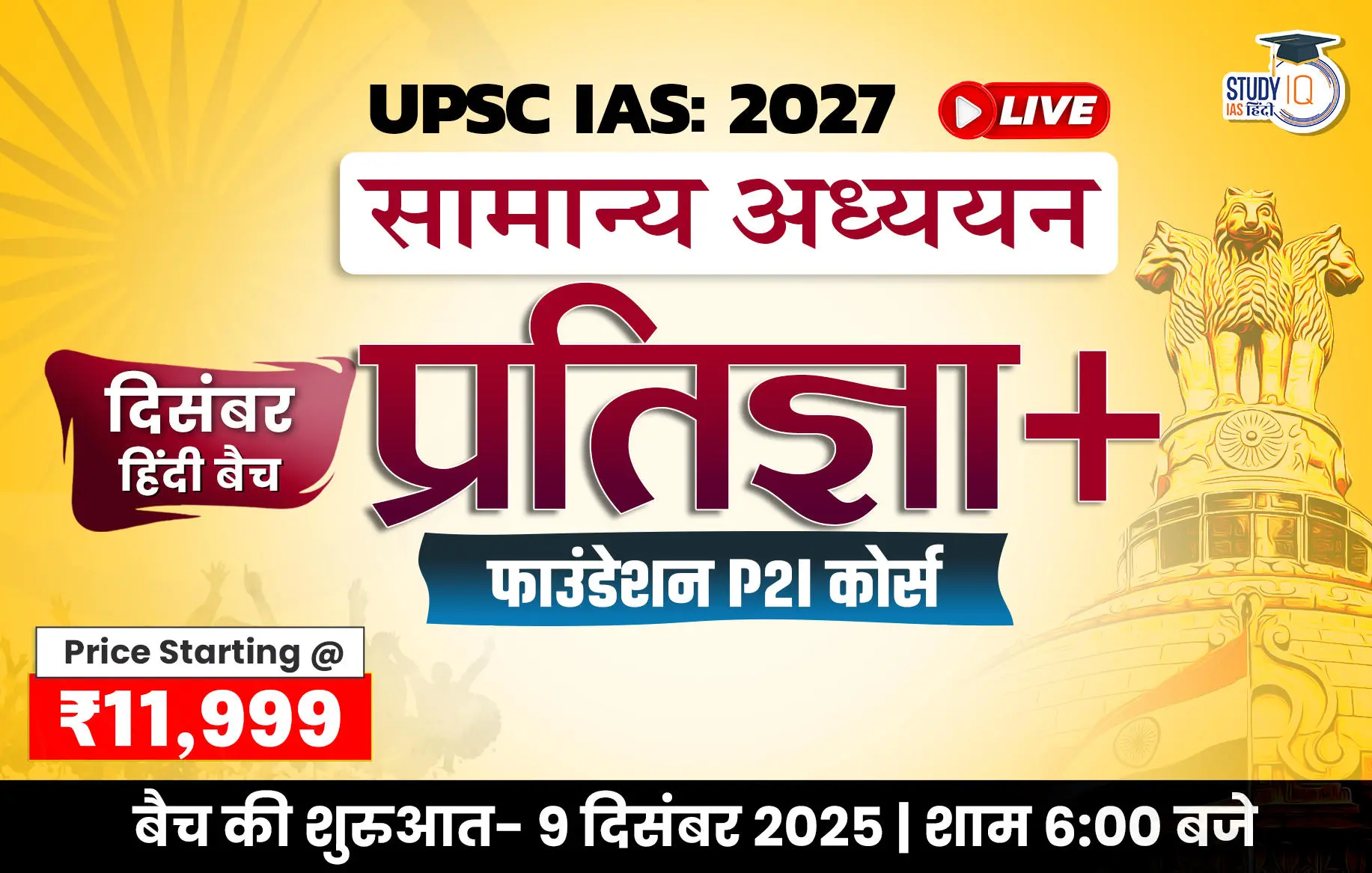Table of Contents
On August 8, 1942, at the height of India’s fight for freedom, Mahatma Gandhi delivered the rallying cry that would forever change the course of history: “Do or Die. This was the beginning of the Quit India Movement, or August Kranti, a mass uprising that united millions in a nonviolent but uncompromising demand for an end to British colonial rule.
Now, in 2025, we mark 83 years of courage, reflecting on the sacrifices of those who rose in unity and the movement’s continued relevance in shaping a strong, democratic India. PM Modi paid tribute to Quit India Movement heroes, recalling their role under Mahatma Gandhi’s leadership in uniting Indians for independence.
Quit India Movement 1942
| Facts Related to Quit India Movement | |
| Launch Date | 8 August 1942
|
| Leader | Mahatma Gandhi |
| Slogan | Do or Die |
| Nature | Mass anti-colonial movement demanding immediate British withdrawal from India. |
| Other Key Leaders & Underground Role |
|
| Demands |
|
| British Response |
|
- Quit India Movement is observed annually on August 8, 1942. Quit India Movement Day is a day to remember the sacrifices made by the Indian freedom fighters and people in their fight for independence.
- At the meeting of the All-India Congress Committee in Mumbai, Mahatma Gandhi demanded the end of British rule and launched the Quit India Movement. In his address at the Gowalia Tank Maidan, now referred to as August Kranti Maidan, Mahatma Gandhi urged listeners to “Do or Die”.
- The Indian flag was raised at the Gowalia Tank Maidan in Mumbai during the Quit India Movement by Aruna Asaf Ali, also referred to as the “Grand Old Lady” of the Independence Movement. Yusuf Meherally, a socialist and trade unionist who served as Mayor of Mumbai, is the author of the phrase “Quit India.”
Background
- The failure of the Cripps Mission (1942) in offering acceptable constitutional reforms.
- Economic hardships and shortages due to World War II.
- Rising nationalist sentiment after earlier movements (Civil Disobedience, Purna Swaraj demand).
- Britain’s weakened state during WWII.
Causes of Quit India Movement
Attitude of British Government
- Broken promises on self-rule despite Indian support in WWII.
- Failure of August Offer (1940) and the Cripps Mission (1942).
- British sympathy towards the Muslim League’s Pakistan demand angered nationalists.
Growing Nationalism
- Decades-long struggle reached peak impatience in 1942.
- Experience of Congress ministries (1937–39) gave a taste of self-rule.
- Earlier movements like Individual Satyagraha (1940–41) built the groundwork.
Socio-Economic Factors
- Wartime inflation, shortages, heavy taxation, export of rice caused deprivation.
- Bengal famine (1943) was linked to wartime policies.
Military Factors
- British defeats in South-East Asia.
- Japanese troops are advancing towards the Indian borders.
- British retreat from Burma deepened insecurity.
Nature of the Quit India Movement
- Started as civil disobedience but turned into a mass uprising.
- More radical and militant than NCM (1920–22) or CDM (1930–34).
- Gandhi was willing to accept violence in self-defence.
- Four main features:
- Violence against the state is tolerated.
- Anyone supporting complete independence could join.
- Students to take leadership after the arrests.
- Total defiance of government authority.
- Leaderless after arrests → grassroots-led.
- Underground activities, sabotage, parallel governments.
Quit India Movement Phases
Quit India Movement Phases are categorised into three phases that are described below in detail. Quit India Movement Day is commemorated every year on 8 August in India.
| Phases | Description |
| First Phase |
|
| Second Phase |
|
| Third Phase |
|
Impacts of Quit India Movement 1942
The Quit India Movement of 1942, also known as the August Movement or Bharat Chhodo Andolan, was a civil disobedience movement that was a major turning point in India’s freedom struggle. The movement had many effects, including:
- New leaders: Aruna Asaf Ali became president of the Indian National Congress, and other new leaders emerged, including Ram Manohar Lohia, JP Narayan, and Usha Mehta.
- Political changes: Organisations like the Rashtriya Swayam Sevak Sangh, Hindu Mahasabha, and Muslim League gained popularity.
- Arrests: The government arrested nearly 100,000 people, including women and children, and kept them imprisoned until 1945. The government also declared the INC illegal and banned it.
- Complete freedom: India gained complete freedom on August 15, 1947.
Importance of Quit India Movement
- The government used harsh repression tactics, but the populace was unmoved and kept up their fight.
- Even though the government claimed that independence could only be granted when the war ended, the movement emphasised that Indians must be involved in governance for it to work.
- The movement prioritised calling for total independence as the main goal of the freedom movement. Public spirit and anti-British feelings were raised.
- Underground activities were carried out by figures who eventually became well-known leaders such as Ram Manohar Lohia, J.P. Narayan, Aruna Asaf Ali, Sucheta Kriplani, and Biju Patnaik.
- Women participated actively in the movement.
- Usha Mehta, among other female activists, contributed to the establishment of an underground radio station, which sparked awareness of the movement.
- The Quit India Movement has strengthened the sense of brotherhood and unity among people.
- Many high school and college kids dropped out, while lots of adults quit their jobs and took money out of the banks.
- The costs of World War II led the British to come to the important conclusion that India was unmanageable in the long run, even though the Quit India movement collapsed in 1944 as a result of their insistence that independence could only take place when the war was over and their refusal to grant it immediately.
- The character of political negotiations with the British was altered, ultimately leading to India’s independence.
Other Details of Quit India Movement (QIM)
Regional Spread
- Bihar & Eastern UP: Strong student, peasant, and worker participation. JP Narayan’s underground government near Nepal border.
- UP: Armed villagers attacked police posts, strikes in Kanpur, Lucknow, Nagpur.
- Bengal: Protests, sabotage, tribal and peasant movements linked to QIM.
- Western India: Guerrilla attacks; “Azad Government” in Ahmedabad.
- South India: K.T. Bhashyam led strikes in Bangalore.
Parallel Governments
- Ballia (Aug 1942) – Chittu Pandey: Freed Congress leaders.
- Tamluk (1942–44) – Satish Chandra Samanta: Relief work, schools, paddy to poor, Vidyut Vahinis.
- Satara (1943–45) – Y.B. Chavan, Nana Patil: Prati Sarkar, justice forums, prohibition, “Gandhi marriages”.
British Repression
- 100,000+ arrested, Congress banned.
- Casualties: 1,028 (official) to over 10,000 (estimates).
- Support came from the Muslim League, the Hindu Mahasabha, the princely states, the bureaucracy, and the army.
Limitations
- Immediate objectives not achieved.
- Lack of central leadership after the arrests.
- Opposition from the Muslim League, CPI, Hindu Mahasabha, Ambedkar, and Periyar.
- Low Muslim participation; communal divide widened.
- Instances of communal violence.
Quit India Movement UPSC
The Violence that wasn’t planned happened in certain places during the Quit India movement. The British forcefully put an end to the movement; people were shot, and lathi-charged, villages were set on fire, and huge fines were imposed. To suppress the unrest, the authorities used brutality and detained more than 100,000 individuals.
Many parties and collaborations like the Hindu Mahasabha, the Communist Party of India, and the Muslim League opposed this movement. The movement was also not supported by the Indian bureaucracy. The League opposed the British leaving India without first dividing the nation. Since the British were associated with the Soviet Union, the Communist Party supported them.
The Hindu Mahasabha publicly rejected the Quit India Movement’s appeal and boycotted it out of concern that it would lead to internal unrest and threaten internal security during the war. Subhas Chandra Bose organised the Azad Hind administration and the Indian National Army while operating from outside. Because they opposed Mahatma Gandhi’s concept, many Congress members, including C Rajagopalachari, resigned from the provincial legislature.


 Birsa Munda Birth Anniversary 2025: Life...
Birsa Munda Birth Anniversary 2025: Life...
 Military Innovations of Afghans and Turk...
Military Innovations of Afghans and Turk...
 Self-Respect Movement, History, Objectiv...
Self-Respect Movement, History, Objectiv...

























